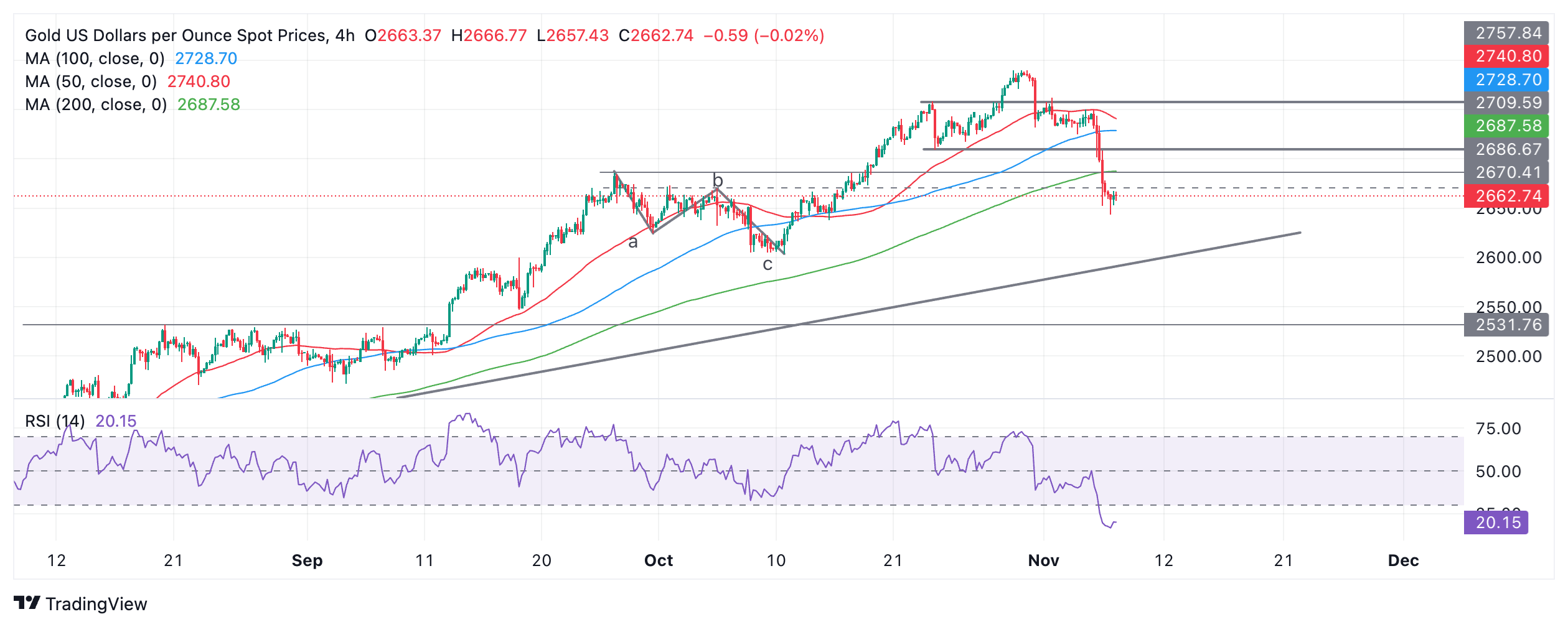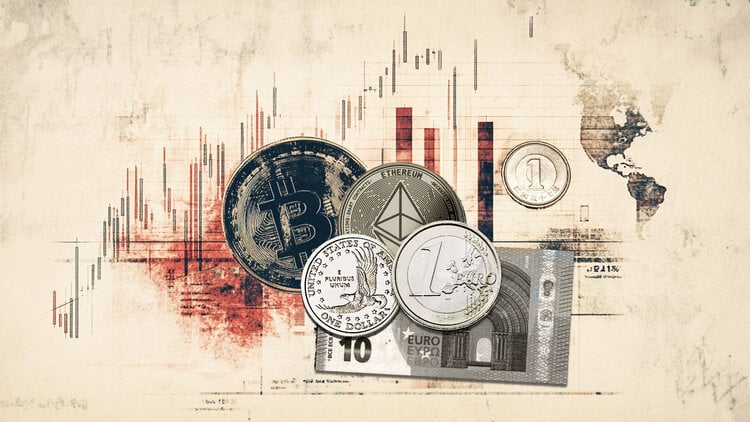- Gold finds a bottom on Thursday after experiencing a 3.0% drop on Wednesday following news of Donald Trump’s victory in the presidential race.
- A stronger US dollar, capital pivoting towards riskier assets and the potential dismantling of geopolitical risks were all bearish factors.
- Technically, XAU/USD extends its short-term downtrend even though the RSI momentum indicator is oversold.
Gold (XAU/USD) stabilizes at $2,660 on Thursday after falling three percent the previous day as now President-elect Donald Trump secured victory in the US presidential election.
Gold falls 3.0% as Donald Trump wins the elections
Gold’s sharp decline on Wednesday was partly a result of the strengthening of the US Dollar (USD) due to Trump’s dollar-friendly economic agenda and his preference for pro-tariff protectionism. Since Gold is primarily priced and traded in USD, the stronger Dollar had an immediate negative impact on its price.
Trump won the presidency by surpassing the threshold of 270 electoral votes. As of Thursday, Trump has 295 votes to Harris’ 226, according to the Associated Press. The Republican party also has a majority in the United States (US) Senate – 52 out of 44 – and is in the lead to win a majority in the US Congress, with 206 seats compared to 191 in Democrats so far, although 38 have yet to be decided.
The precious metal may have been hit further by investors’ preference for alternative, riskier assets, such as Bitcoin (BTC), which hit a new all-time high on expectations that Trump would relax cryptocurrency regulation. Stocks also rose to record levels due to anticipated tax cuts and an overall looser regulatory environment. All of this was at the expense of Gold, which saw capital outflows as investors rebalanced their portfolios.
Gold also rises during geopolitical crises and wars due to increased safe haven demand. Trump’s claims that he can end conflicts in the Middle East and Ukraine, while apparently exaggerated (“I will have that (Ukraine-Russia) war resolved in one day – 24 hours,” Trump once said), probably also affected the safe haven flows.
Technical Analysis: XAU/USD enters a short-term downtrend
Gold breaks the $2,700 level and falls to the mid-$2,650s on Thursday. The precious metal is now in a short-term downtrend and, given the “trend is your friend” principle, is vulnerable to further weakness in the near term.
XAU/USD 4-hour chart
That said, the RSI momentum indicator has entered deep into oversold territory, indicating that shorts should not add to their positions. If the RSI breaks out of the oversold, sellers are advised to close their trades and open tentative longs as it will be a signal that the price is likely to correct upwards.
Due to the short-term bearish trend, a break below the daily low of $2,643 would confirm a continuation, probably towards the next bearish target at $2,605, the trend line for the long-term trend.
The precious metal remains in a medium to long-term bullish trend, with a material risk of an upward reversal in line with these broader cycles. However, at this time there are no technical signs that this is happening.
A break above the all-time high of $2,790 would reconfirm the medium-term uptrend and would likely lead to a move towards the resistance at $2,800 (round number and psychological number), followed by $2,850.
Gold FAQs
Gold has played a fundamental role in human history, as it has been widely used as a store of value and medium of exchange. Today, apart from its brilliance and use for jewelry, the precious metal is considered a safe-haven asset, meaning it is considered a good investment in turbulent times. Gold is also considered a hedge against inflation and currency depreciation, since it does not depend on any specific issuer or government.
Central banks are the largest holders of Gold. In their aim to support their currencies in turbulent times, central banks tend to diversify their reserves and purchase Gold to improve the perception of strength of the economy and currency. High Gold reserves can be a source of confidence for the solvency of a country. Central banks added 1,136 tons of gold worth about $70 billion to their reserves in 2022, according to data from the World Gold Council. This is the largest annual purchase since records exist. Central banks in emerging economies such as China, India and Türkiye are rapidly increasing their gold reserves.
Gold has an inverse correlation with the US Dollar and US Treasuries, which are the main reserve and safe haven assets. When the Dollar depreciates, the price of Gold tends to rise, allowing investors and central banks to diversify their assets in turbulent times. Gold is also inversely correlated with risk assets. A rally in the stock market tends to weaken the price of Gold, while sell-offs in riskier markets tend to favor the precious metal.
The price of Gold can move due to a wide range of factors. Geopolitical instability or fear of a deep recession can cause the price of Gold to rise rapidly due to its status as a safe haven asset. As a non-yielding asset, the price of Gold tends to rise when interest rates fall, while rising money prices tend to weigh down the yellow metal. Still, most of the moves depend on how the US Dollar (USD) performs, as the asset is traded in dollars (XAU/USD). A strong Dollar tends to keep the price of Gold in check, while a weaker Dollar is likely to push up Gold prices.
Source: Fx Street
I am Joshua Winder, a senior-level journalist and editor at World Stock Market. I specialize in covering news related to the stock market and economic trends. With more than 8 years of experience in this field, I have become an expert in financial reporting.








